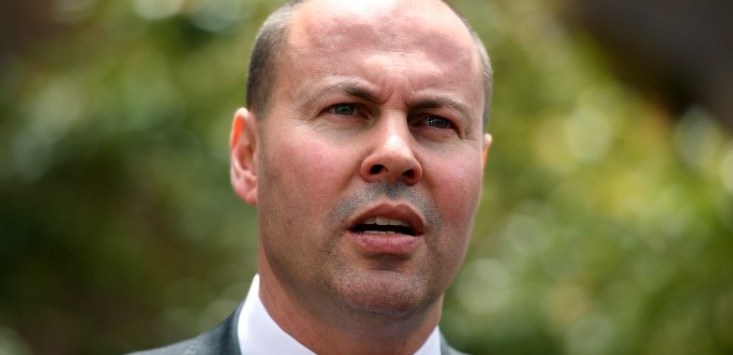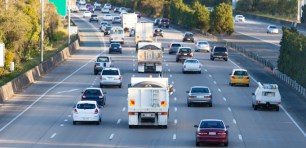
Treasurer Josh Frydenberg.
Public companies rarely hand back government grants they don’t need, but that’s precisely what Super Retail Group did yesterday morning when it unveiled a surprise doubling of net profit for the December half and disclosed it was voluntarily going to return $1.7 million in JobKeeper payments.
Super Retail is 29.8% owned by secretive Brisbane billionaire Reg Rowe, 76, who sits on the board, overseeing his $766 million stake in the company, which operates four retail brands: Rebel, BCF, Super Cheap Auto and Macpac Australia.
Only Super Retail’s New Zealand operations and Macpac qualified for $6.5 million in wage subsidy payments disclosed in the 2019-20 full-year results.
The $1.7 million voluntary hand-back was welcomed by Treasurer Josh Frydenberg yesterday and the disclosure sparked plenty of media interest from the likes of The Guardian and ABC radio’s PM program.
There was a booming 14% jump in December quarter retail sales across the board in Australia, so any retailer which still had its hand out for JobKeeper part two after September 30 really has some explaining to do.
Following the lead of Toyota Australia in voluntarily returning $18 million of JobKeeper payments, the pressure is on others who participated in the $100 billion-plus program to do likewise.
There’s a very simple way for the federal government to maximise Toyota-style JobKeeper returns. It should announce that a comprehensive register of net JobKeeper outlays will be made public via a website before the end of April, plus that this will be tabled in the federal parliament and made available for a special parliamentary committee probing the biggest and most rorted grants program in Australian history.
Recipients could avoid being named by returning all that was given or reducing their number by returning some of it before March 30 when the scheme finishes.
Only about 3% — or $3 billion — in JobKeeper payments have been disclosed via public company results, so most of the rorting has been occurring out of sight in private outfits, foreign-owned companies such as Toyota, and the not-for-profit sector.
What started out as an employee subsidy program quickly morphed into an employer subsidy program, and the best way to measure the size of potential recipients is to look at how many people each qualifying entity employs.
For instance, the Catholic Church employs close to 300,000 Australians and not-for-profits were given the very low bar of simply having to demonstrate a 15% drop in revenue in either March, April or May last year to qualify for six months of JobKeeper payments until September 30.
At $18,000 a pop — $750 a week for each employee for the six months until September 30 — you’re talking a potential $5.4 billion if the entire Catholic Church workforce was eligible, which obviously wasn’t the case. But shouldn’t we know how much Vatican-controlled entities did get?
Church finances, with a failure to consolidate thousands of operating entities into one central balance sheet, are particularly difficult to track.
Even the federal money-laundering regulator AUSTRAC demonstrated this with its embarrassing claim that $2.3 billion in cash was transferred from the Vatican to Australia over seven years. The true figure was less than $10 million.
The auditor-general should also conduct a full review of the JobKeeper program independent of whatever work parliamentary committees do, and these committees should be able to call witnesses — such as Qantas chief executive Alan Joyce, Crown Resorts chief executive Ken Barton, Premier Investments chairman Solomon Lew, and Seven West Media chairman Kerry Stokes — to explain why their public companies received so much more in JobKeeper payments than other participants from their respective industries.
If it was good enough for Westfield’s parent company Scentre Group to decide at the outset it would not accept $1 in public subsidies, how did Seven West Media come to receive $40 million when it is controlled by a bloke worth $5 billion and didn’t seem to get anywhere near the qualification of a 50% drop in revenue for a one-month period (which is what companies turning over more than $1 billion a year were required to show)?
Given that many local councils have to disclose every last recipient of ratepayer-funded grants, why has there been so little disclosure on who tapped into the biggest grants program in history — particularly when you consider the scrutiny around the sports rorts grants and the growing anecdotal evidence of JobKeeper rorting?
By way of comparison, check out the searchable New Zealand register of wage subsidy recipients.
As the Ardern Labour government explains on its business support website: “To ensure payments under the wage subsidy scheme are transparent and that the scheme is accountable to the public, you can search for companies that have received payments. The search will tell you the name of the company, the number of employees for whom payment has been made and the amount paid.”
If only we had the same disclosure regime here.
This article was first published by Crikey. Read the original article.
Handpicked for you

Calls for large retailers to return JobKeeper after Super Retail Group joins Toyota and repays $1.7 million



COMMENTS
SmartCompany is committed to hosting lively discussions. Help us keep the conversation useful, interesting and welcoming. We aim to publish comments quickly in the interest of promoting robust conversation, but we’re a small team and we deploy filters to protect against legal risk. Occasionally your comment may be held up while it is being reviewed, but we’re working as fast as we can to keep the conversation rolling.
The SmartCompany comment section is members-only content. Please subscribe to leave a comment.
The SmartCompany comment section is members-only content. Please login to leave a comment.